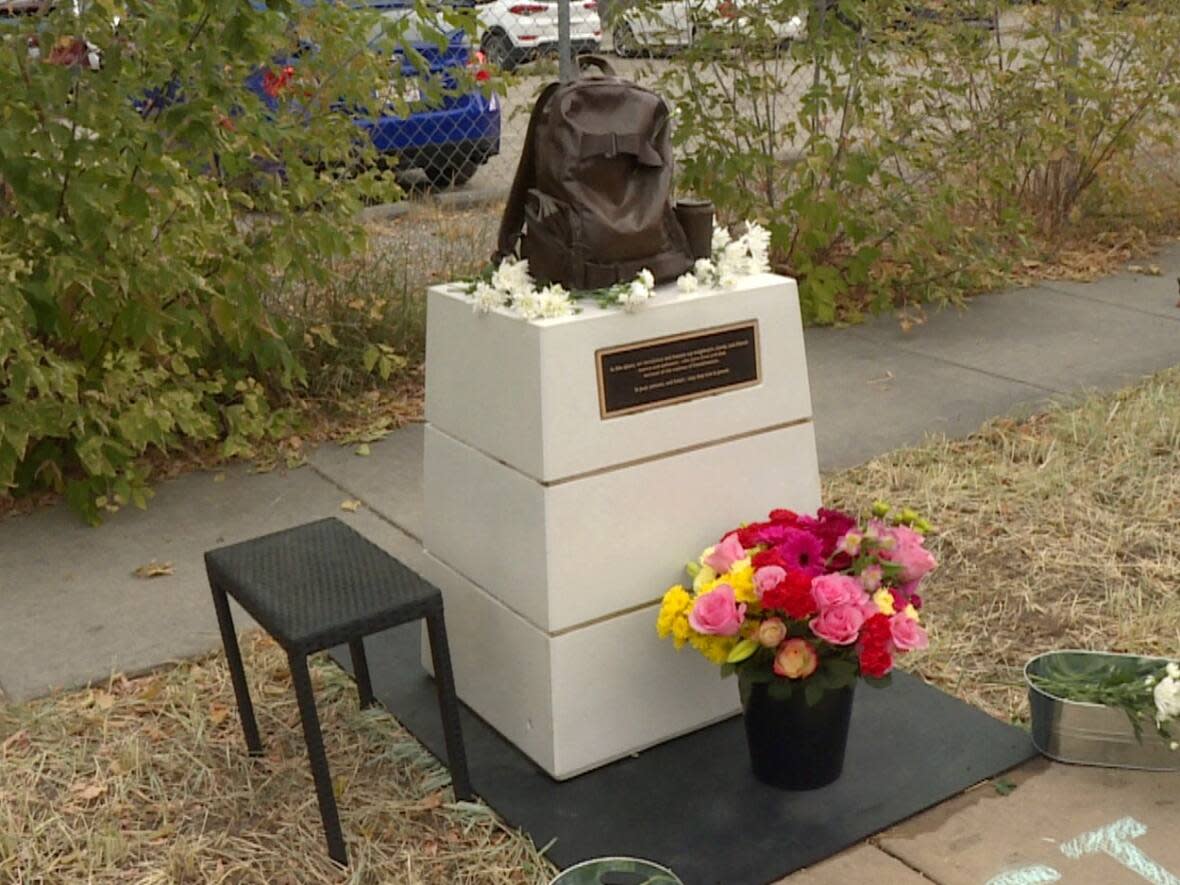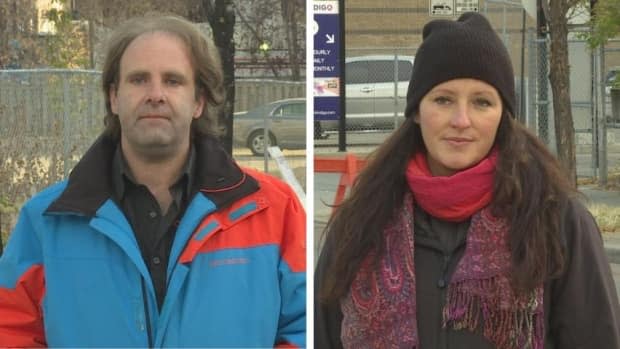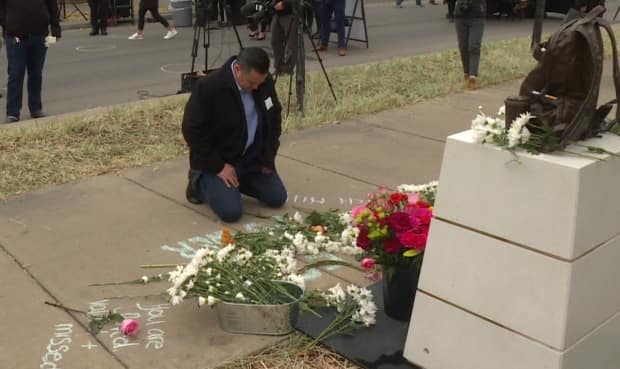Permanent memorial to honour city's homeless unveiled in downtown Calgary

A permanent memorial to commemorate those who have died while experiencing homelessness in Calgary was unveiled downtown on Wednesday.
The first of its kind in Calgary, the memorial includes a bronze sculpture of a backpack, a handcrafted wooden bench and murals from local artists. It's located at 107 13th Ave. S.E.
Those who visit the site are invited to mourn, pause and reflect on the lives of those who have died.
"[The memorial is] important to me," said Nigel Kirk at its unveiling.
Kirk is with the Client Action Committee, a volunteer-led advisory group whose members have experienced homelessness.

The committee was one of the project's key organizers, along with the Calgary Homeless Foundation, the University of Calgary, the City of Calgary, Canadian Artists Against Poverty and several homeless-serving agencies.
"This is seven years' worth of work, and it's very touching," Kirk said. "And it's a way that I know I can pay tribute to a lot of the people that I love, that I've lost."
Ward 8 Coun. Evan Woolley spoke at the memorial's unveiling. He said that as a lifelong resident of the area, he counts many of the city's homeless citizens as his friends and neighbours.
"I have watched them grow, and watched their struggles over the years, and watched many of them disappear," Woolley said.
"We have monuments all over our city to the rich and powerful. And I'm just really pleased that we now have a memorial to those … who have lost their lives being marginalized.
"They are our loved ones, they are our family members, they are our neighbours, and oftentimes, they are dying alone."
A momentous shift
In Calgary's early history, those who died unclaimed or abandoned were buried in "potter's field." Hundreds of people were buried beneath a small patch of grass in Union Cemetery, marked by a post reading "PF."
The name comes from the Gospel of Matthew and is a reference to a public field where "foreigners" and outcasts were buried.
"Potter's field … is a mass unmarked grave. And there are no gravestones, there are no headstones," said Jessica Shaw, an associate professor at the University of Calgary.
She is conducting research on end-of-life care for people experiencing homelessness.
These days, the city offers dignified burials, but often does not have headstones, she said.

The memorial allows a place to gather and pay respects, and it will be cared for by the city.
"It's a momentous shift, and I think it's a statement about how we're moving forward as a community and valuing and honouring people," Shaw said.
She estimates more than 600 people have died since 2017 while experiencing homelessness in Calgary.
"Those people and their memories are with us here today, and really, it's for them," Shaw said. "And it's for our community."
A call to action
According to Shaw, every aspect of the memorial was designed by people who have experienced homelessness.
It was then created by artists from Canadian Artists Against Poverty, Fuse33, and Studio West Bronze Foundry.
The backpack sculpture, for example, was based on a real backpack that was donated to the project by a man who used it to survive for 10 years while homeless in Calgary, she said.

And the poem etched on the memorial was written by someone who experienced homelessness, too.
"We hope that as people walk through it, it's sort of an emotional and spiritual journey, too, as you're walking through the physical space," Shaw said.
"This place is not only to gather and reflect, but I see it also as a call to action … and hopefully, moving toward a time when this is a historical memorial."


